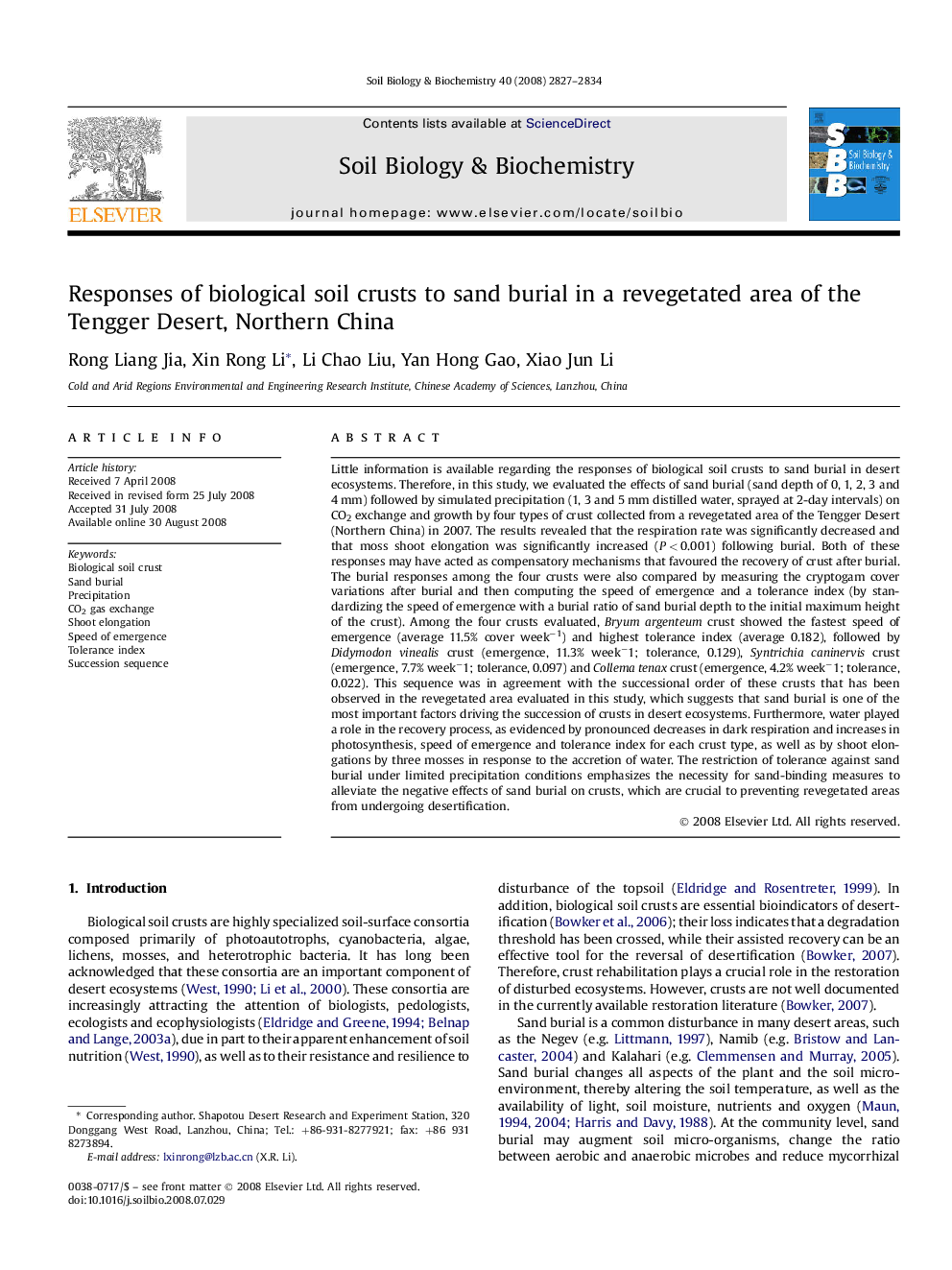| کد مقاله | کد نشریه | سال انتشار | مقاله انگلیسی | نسخه تمام متن |
|---|---|---|---|---|
| 2026845 | 1070048 | 2008 | 8 صفحه PDF | دانلود رایگان |

Little information is available regarding the responses of biological soil crusts to sand burial in desert ecosystems. Therefore, in this study, we evaluated the effects of sand burial (sand depth of 0, 1, 2, 3 and 4 mm) followed by simulated precipitation (1, 3 and 5 mm distilled water, sprayed at 2-day intervals) on CO2 exchange and growth by four types of crust collected from a revegetated area of the Tengger Desert (Northern China) in 2007. The results revealed that the respiration rate was significantly decreased and that moss shoot elongation was significantly increased (P < 0.001) following burial. Both of these responses may have acted as compensatory mechanisms that favoured the recovery of crust after burial. The burial responses among the four crusts were also compared by measuring the cryptogam cover variations after burial and then computing the speed of emergence and a tolerance index (by standardizing the speed of emergence with a burial ratio of sand burial depth to the initial maximum height of the crust). Among the four crusts evaluated, Bryum argenteum crust showed the fastest speed of emergence (average 11.5% cover week−1) and highest tolerance index (average 0.182), followed by Didymodon vinealis crust (emergence, 11.3% week−1; tolerance, 0.129), Syntrichia caninervis crust (emergence, 7.7% week−1; tolerance, 0.097) and Collema tenax crust (emergence, 4.2% week−1; tolerance, 0.022). This sequence was in agreement with the successional order of these crusts that has been observed in the revegetated area evaluated in this study, which suggests that sand burial is one of the most important factors driving the succession of crusts in desert ecosystems. Furthermore, water played a role in the recovery process, as evidenced by pronounced decreases in dark respiration and increases in photosynthesis, speed of emergence and tolerance index for each crust type, as well as by shoot elongations by three mosses in response to the accretion of water. The restriction of tolerance against sand burial under limited precipitation conditions emphasizes the necessity for sand-binding measures to alleviate the negative effects of sand burial on crusts, which are crucial to preventing revegetated areas from undergoing desertification.
Journal: Soil Biology and Biochemistry - Volume 40, Issue 11, November 2008, Pages 2827–2834